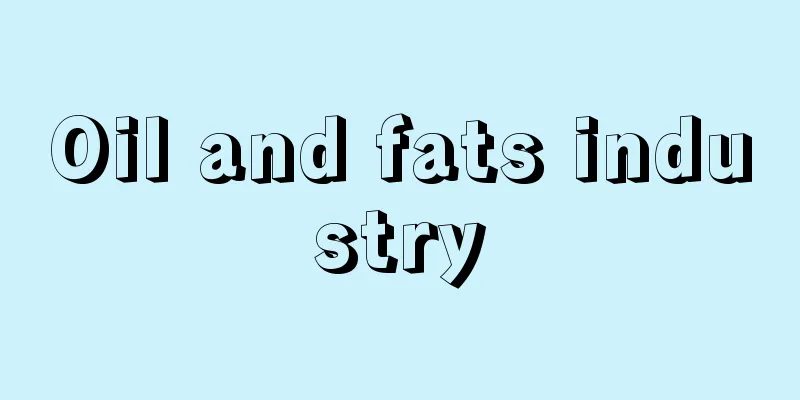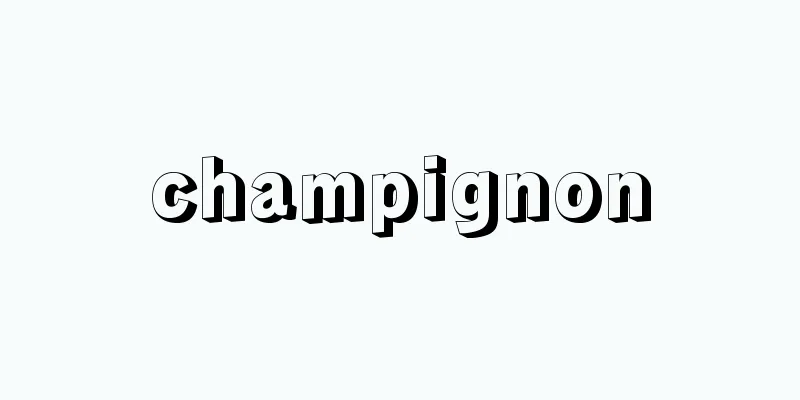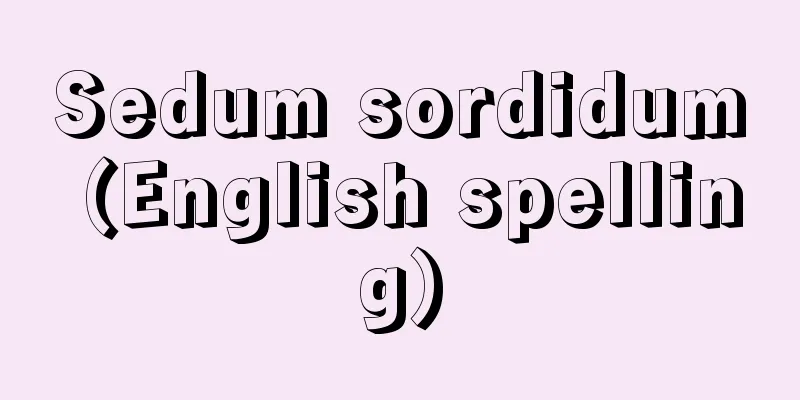Oil and fats industry

|
The chemical industry involves the extraction, processing, and manufacture of oils and fats. The oil and fat industry can be broadly divided into two categories: the animal and vegetable oil manufacturing industry (oil refining industry), which extracts oils and fats from animal and vegetable oils, and the oil and fat processing industry, which processes oils and fats. It can also be divided into the edible oil industry and the industrial oil industry based on use. Generally, fats and oils are esters of fatty acids and glycerin (triglycerides). The fats of livestock animals, which exist as solids at room temperature, contain a lot of saturated fatty acids, while vegetable oils and fish oils, which exist as liquids at room temperature, contain a lot of unsaturated fatty acids. The method of rendering from animal raw materials is generally the melting method, in which fats and oils are extracted by heating. Animal fats and oils are divided into livestock fats and oils obtained from cattle and pigs, and marine fats and oils obtained from fish. About 40% of livestock fats and oils are used for food purposes such as salad oil and margarine, and the rest is processed into soap and cosmetics. Marine fats and oils are fish oils separated from fish broth, and are often used as raw materials for margarine and shortening (edible hardened oil), but are also used as feed for farmed fish. Domestic production of fats and oils increased from 581,000 tons in 1960 to 2,426,000 tons in 1988, but has since fluctuated between 2 million and 2.2 million tons (2,088,000 tons in 2008). Domestic production of animal fats and oils peaked at 769,000 tons in 1988 and has since fallen by almost half (to 324,000 tons in 2008). When extracting oils from plant materials, the pressing method, in which the material is pressurized to squeeze out the oil, and the extraction method, in which the oil is dissolved in a volatile solvent such as alcohol, are used. The collection method is selected taking into consideration the type of material, the oil content, and the refining method. Oil-rich rapeseed, sesame, and cottonseed are first pressed to extract the oil, and then extracted with a solvent (this is also called the pressing method). Soybean oil, which is extracted from soybeans with a low oil content, and rice oil (rice bran oil), which is extracted from rice bran, are extracted using the extraction method. Refined oils are used to manufacture edible oils such as salad oil and margarine. Linseed oil and castor oil have industrial uses such as paints, printing inks, and lubricants. In addition, the by-product, oil cake (cake meal), is used as livestock feed. Vegetable oil production was mostly a cottage industry, but with the liberalization of soybean imports in 1961, it changed to large-scale factories equipped with continuous extraction equipment. From 1971, imports of refined vegetable oils were also liberalized, leading to further rationalization and restructuring. As of 2010, the production of oils and fats by raw material was 386,000 tons of oils and fats extracted from domestic raw materials, and 2,549,000 tons of oils and fats from imported raw materials, with the largest supply being rapeseed oil, soybean oil, palm oil, and lard, in that order. Looking at the consumption of oils and fats by use, 2,386,000 tons was for food and 559,000 tons for industrial use. The oil and fat processing industry is an industry that uses oils and fats as raw materials and processes them to produce fatty acids, glycerin, soap, hardened oils, etc., and is also called the oil and fat processing, soap, and detergent industry, including the production of surfactants such as synthetic detergents from petrochemical raw materials. The most common oil and fat processing products are used in the food industry, such as margarine, shortening, mayonnaise, and dressings. Partially hydrogenated oils, which are the raw materials for margarine and shortening, are produced by adding hydrogen to vegetable oils and fish oils that contain unsaturated fatty acids, and in the process, some trans fatty acids are generated. In 2003, the World Health Organization (WHO) and the Food and Agriculture Organization of the United Nations (FAO) reported that the intake of trans fatty acids increases LDL cholesterol (bad cholesterol) and increases the risk of heart disease, and an increasing number of countries are restricting the use of products containing trans fatty acids. Various surfactants, which are derivatives of fatty acids obtained by hydrolysis of fats and oils, are used in the home for laundry detergents, dishwashing detergents, shampoos, etc. Fatty acids such as stearic acid are also widely used in industry, for example as lubricants for rubber products such as tires. Glycerin, obtained by refining the waste liquid from the decomposition of fats, is used in cosmetics as a moisturizer and emulsifier, and is used as an antifreeze like ethylene glycol. It is also important as a raw material for nitroglycerin. Soap, a typical oil-based processed product, is said to have been introduced to Japan from Portugal around the 16th century (during the Keicho era), but soap manufacturing technology only developed during the Meiji era. In 1872 (Meiji 5), the Kyoto Seimi Bureau began Japan's first industrial soap production at the behest of the Kyoto Prefectural Governor. In 1873, Tsutsumi Soap Factory was the first private company to manufacture and sell domestically produced laundry soap. In 1890, Kao Soap, Japan's first branded soap, was released, and it was only in the latter half of the Meiji era that ordinary people began to use soap for washing their faces, bathing, and doing their laundry. In response to the growing demand, improvements were made to mass production, such as the heating method for the saponification pot, the manufacturing method (from frame kneading to machine kneading), and the development of new soap ingredients. Soap is an alkaline fatty acid salt obtained by hydrolyzing (saponifying) fats and oils with alkali. Therefore, it cannot be used on animal fibers such as wool and silk, which are weak against alkali, and it does not clean well in acidic water or hard water that contains a lot of magnesium and calcium. Synthetic detergents obtained from the petrochemical industry overcame these drawbacks and had high cleaning power, and demand for them increased with the spread of electric washing machines in the 1960s. Early synthetic detergents used sodium alkylbenzene sulfonate (ABS) had problems with being difficult to decompose in the environment, so by 1970 (Showa 45), they were replaced by linear sodium alkylbenzene sulfonate (LAS), which is more biodegradable. Since the 1980s, non-ionic surfactants such as polyoxyethylene alkyl ether (AE), which is less toxic, have also come into use. In addition, surfactants such as alkyl polyglycosides, which are made from sugars such as glucose and are highly biodegradable and cause little skin irritation, and sodium α-sulfofatty acid esters (MES), which use plant-based detergent ingredients in response to global warming and significantly reduce carbon dioxide ( CO2 ), have also been developed and put into practical use. [Yamamoto Yasuhiro] "New Surfactant Handbook" edited by Tokiyuki Yoshida, Shinichi Shindo, Tadayoshi Ogaki, and Itsuki Yamanaka (1987, Kogaku Tosho) " "Oils, Fats, and Oilseeds Handbook" edited by Yoshiro Abe (1988, Saiwai Shobo) " "Oil Chemistry Handbook - Lipids and Surfactants" 4th Edition edited by the Japan Oil Chemists' Society (2001, Maruzen) [Reference items] | | | |Source: Shogakukan Encyclopedia Nipponica About Encyclopedia Nipponica Information | Legend |
|
油脂を採取し加工・製造する化学工業。油脂工業は、大きく分けて動植物油脂から油脂を取り出す動植物油脂製造業(製油工業)と油脂を加工する油脂加工業の二つがある。また、用途によって食用油工業と工業油工業に分けることもできる。 一般に油脂とは脂肪酸とグリセリンのエステル(トリグリセリド)であり、常温で固体として存在する畜産動物の脂には飽和脂肪酸が多く含まれ、常温で液体の油として存在する植物油や魚油には不飽和脂肪酸が多く含まれている。 動物性原料からの採集方法(レンダリング)としては、一般的には加熱して油脂を溶出させる融出法が用いられる。動物油脂には牛やブタなどから得られる畜産動物油脂と、魚類から採取する水産油脂とがある。畜産動物油脂の4割程度がサラダ油、マーガリンなどの食用に使われ、残りはせっけんや化粧品などに加工されている。水産油脂は魚の煮汁から油を分離した魚油であり、多くはマーガリンやショートニング(食用硬化油)などの原料になるが、養殖魚用の飼料にも使われている。油脂の国内生産量は1960年(昭和35)の58万1000トンから1988年の242万6000トンまで増加していたが、その後は200万~220万トンほどで推移している(2008年は208万8000トン)。動物油脂の国内生産量は、1988年の76万9000トンをピークに現在はほぼ半減している(2008年は32万4000トン)。 植物原料からの採取では、原料を加圧して油を絞り出す圧搾法と、アルコールなどの揮発性溶剤で油脂を溶出させる抽出法が用いられる。採集方法は原料の種類、油の含有量、精製方法などを考えて選択されている。油分の多い菜種、ごま、綿実(めんじつ)などは最初に圧搾法で油を絞り、ついで溶剤で抽出している(これを圧抽法ともいう)。油分が少ない大豆からとれる大豆油や米糠(こめぬか)からとれる米油(米糠油)は抽出法が用いられる。精製した油はサラダ油などの食用油やマーガリンなどの製造に使われる。あまに油、ひまし油などは塗料、印刷インキ、潤滑油といった工業用の用途がある。また、副産物の油かす(ケーキミール)は家畜の飼料などに用いられる。植物性油脂製造は家内工業的なものが多かったが、1961年に大豆の輸入自由化に伴い連続抽出装置を備えた大規模な工場にかわっていった。1971年から植物性精製油の輸入も自由化され、さらに合理化と再編が進んでいった。 2010年(平成22)時点で、原料別油脂生産量では国産原料から搾油した油脂は38万6000トン、輸入原料による油脂は254万9000トンであり、原料油脂の種類では菜種油、大豆油、パーム油、豚脂(ラード)の順で供給量が多い。用途別の油脂消費量をみると、食用が238万6000トン、工業用が55万9000トンである。 油脂加工業とは、油脂を原料に二次加工して脂肪酸、グリセリン、せっけん、硬化油などを製造する工業であり、石油化学原料からの合成洗剤などの界面活性剤を製造するものを含めて、油脂加工・せっけん・洗剤工業ともいわれる。油脂加工製品でもっとも多く使われているのはマーガリン、ショートニング、マヨネーズ、ドレッシングなどの食品分野である。マーガリン、ショートニングなどの原料となる部分硬化油は不飽和脂肪酸を含む植物油や魚油に水素を付加して製造するが、その過程でトランス脂肪酸が一部生成する。2003年世界保健機関(WHO)と国連食糧農業機関(FAO)によって、トランス脂肪酸は摂取するとLDLコレステロール(悪玉コレステロール)を増加させ心臓疾患のリスクを高めると報告され、トランス脂肪酸を含む製品の使用を規制する国が増えている。 油脂を加水分解して得られる脂肪酸の誘導体である各種界面活性剤は、家庭では衣料用洗剤、食器用洗剤やシャンプーなどに利用されている。ステアリン酸などの脂肪酸はタイヤなどのゴム製品の滑剤として添加されるなど工業用にも広く使用される。脂肪の分解廃液を精製して得られるグリセリンは保湿剤、乳化剤などとして化粧品に使用されたり、エチレングリコールと同様に不凍液として使用されたりする。またニトログリセリンの原料としても重要である。 代表的な油脂加工品であるせっけんは16世紀ころ(慶長(けいちょう)年間)にポルトガルから日本に渡来したといわれているが、せっけん製造技術が発展したのは明治になってからである。1872年(明治5)に京都府知事の命で京都舎密(せいみ)局によって国内初の工業的せっけん製造が開始された。民間においては、1873年に堤石鹸(つつみせっけん)製造所が初めて国産の洗濯せっけんを製造・販売している。1890年には国内初のブランドのついたせっけんである「花王石鹸」が発売され、明治後半になってようやく一般の人も洗顔や入浴、洗濯などにせっけんを使用するようになった。需要が拡大したのに対応して、けん化釜の加熱方法、製造法(枠練りから機械練り)、新しいせっけん原料開発等の量産のための改良も進められた。 せっけんは油脂をアルカリで加水分解処理(けん化)して得られる脂肪酸塩であるためアルカリ性であり、そのためアルカリ性に弱い羊毛や絹などの動物性繊維に使用できない、酸性の水やマグネシウムやカルシウムを多く含む硬水では洗浄効果が十分に発揮できないなどの欠点がある。石油化学工業から得られた合成洗剤は、これらの欠点を克服して高い洗浄力をもち、1960年代の電気洗濯機の普及とともに需要を拡大していった。初期の合成洗剤に使われていたアルキルベンゼンスルホン酸ナトリウム(ABS)は環境中で分解しにくく問題があったため、1970年(昭和45)までに生分解性のよい直鎖アルキルベンゼンスルホン酸ナトリウム(LAS)に転換していった。1980年代からはさらに毒性の少ないポリオキシエチレンアルキルエーテル(AE)などの非イオン性界面活性剤も使用されるようになっている。また、ブドウ糖などの糖類を原料とした生分解性が高く皮膚刺激の少ないアルキルポリグリコシドや、地球温暖化への対応から植物系洗剤原料使用によって二酸化炭素(CO2)を大幅削減するα(アルファ)-スルホ脂肪酸エステルナトリウム(MES)などの界面活性剤も開発され実用化している。 [山本恭裕] 『吉田時行・進藤信一・大垣忠義・山中樹好編『新版 界面活性剤ハンドブック』(1987・工学図書)』▽『阿部芳郎監修『油脂・油糧ハンドブック』(1988・幸書房)』▽『日本油化学会編『油化学便覧――脂質・界面活性剤』第4版(2001・丸善)』 [参照項目] | | | |出典 小学館 日本大百科全書(ニッポニカ)日本大百科全書(ニッポニカ)について 情報 | 凡例 |
<<: Yuzhno-Sakhalinsk (English spelling)
Recommend
Song Book - Utanohon (English) Buch der Lieder
This is a collection of poems written in the yout...
Centrifugal filter - Enshinrokaki
The centrifugal separator is a type of separator ...
Type theory
...The general term for the theory (1908) propose...
Ro¨ssler, Karl Friedrich Hermann
Year of death: 1894.12.2 (1894.12.2) Born: Decembe...
Kusuo Kitamura
Born: October 9, 1917, Kochi [Died] June 6, 1996. ...
Creditor's subrogation right -
The right of a creditor to exercise the rights of...
Iga
It is part of the cupule, which is a modified for...
Orion Nebula
The nebula is located about 5 degrees south of th...
Albany - Albany (English spelling)
A city in the eastern part of New York State, Uni...
Density effect - Mitsudokouka
A phenomenon in which changes in population densit...
Real rights claim - real rights claim
When a person with a real right is hindered or is...
A New Discourse of Trade
…He became a director of the East India Company i...
Glossarium ad scriptores mediae et infimae latinitatis
…At the age of 47, he published his first work, t...
Sawfish - Sawfish
A general term for a family or genus of the order...
Recipient - jutoshonin
During the Joseon Dynasty, Japanese people receive...


![Alaska [State] - Alaska](/upload/images/67cadb8d72589.webp)






